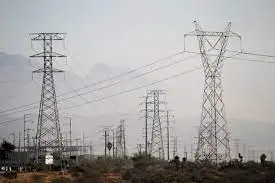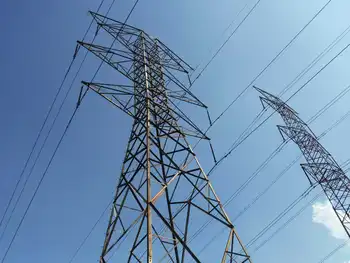Heat wave sparks fear over electricity
TORONTO, ON -- - Hot summer weather coupled with cold nuclear reactors have revived the spectre of last year's electricity shortages in Ontario.
The year's first heat wave has caught the province without an array of generators that were supposed to be in place by the time the summer need for air conditioning pushed electricity demand upward.
Premier Ernie Eves acknowledged yesterday the province's electricity system is still stretched thin.
"Obviously there are things the government can't control and the weather is one of them," Eves said at an outdoor press conference under a blazing sun.
"This week will be a test, there is no doubt about that," he said. "When the temperature goes over 30C, it's always a challenge."
Last summer was marked by soaring power prices, greater reliance on expensive imported power, and appeals for consumers to cut back power use.
The rising prices triggered a political storm for the government, which reacted by freezing the price of power at 4.3 cents a kilowatt hour for householders and small businesses.
This year was supposed to be better, with new generators coming on stream in time for the hot summer weather. But summer's here, and many of the generators still aren't.
Unavailable generators this week include:
An array of temporary generators, capable of producing 409 megawatts of power, sprinkled around the province in areas where transmission bottlenecks can create local shortages. They were intended to be in place for the hot weather, but contracts with suppliers were still being drafted yesterday; the generators won't be working before late next month.
Two mothballed reactors at the Bruce A nuclear generating station were supposed to return to service this month. Delays mean the first unit likely won't deliver full power until late July, and the second, four weeks after that. The two reactors can supply a combined total of 1,500 megawatts. Duncan Hawthorne, chief executive of Bruce Power, said yesterday he has "high confidence" they'll hit the current target.
The first unit of the mothballed Pickering A reactor is not due to return to service until late next month. It is designed to deliver 515 megawatts.
Taken together, the missing generators have the capacity to supply 10 per cent of Ontario's electricity needs on a day of high demand.
Yesterday, demand for power peaked at more than 22,000 megawatts. The all-time record demand was set last Aug. 13, when Ontario at one point was sucking up 25,414 megawatts.
Terry Young, spokesperson for the Independent Electricity Market Operator, said demand is expected to increase as the weather warms, and could reach 24,500 megawatts tomorrow when temperatures hit 33C.
Tom Adams, executive director of Energy Probe, said the current situation points out the "nuclear hole" in Ontario's electricity grid caused by the delays in the mothballed reactors returning to service.
He noted outages are not confined to nuclear generators. Yesterday, more than 9,000 megawatts of Ontario's total generating capacity of about 30,000 megawatts was out of service.
"That's way too much for this time of year," Adams said.
Young said some of the sidelined generators are expected to return to service over the next few days. One unidentified generator, in fact, kicked back in recently.
"But clearly we're looking at assistance from neighbouring jurisdictions in terms of bringing power into this market," he said. "The supply's on the tight side, and it'll get tighter as (time) goes on."
On hot days last summer, the province had to import as much as 4,300 megawatts of power.
The high demand and idled generators revived last summer's fears of power failures. The Toronto area was on the verge of a brownout or blackout at one point last July, but was saved when a breeze sprang up that kept transmission lines cool enough to keep running at full capacity.
With the tight supplies, the price of power paid by large businesses edged up to 8.5 cents a kilowatt hour, compared with an average price over the past year of about 6 cents. That's still far below last summer's record of more than $1 a kilowatt hour.
Big power users represented by the Association of Major Power Consumers of Ontario (AMPCO) were putting on a brave face.
"AMPCO still has a lot of confidence in the system," said president Mary Ellen Richardson. "The system worked well last summer. We think it worked well despite all the stresses, and we've got a good system."
Related News

Restoring power to Florida will take 'weeks, not days' in some areas
MIAMI - Parts of Florida could be without electricity for more than a week, as damage from Hurricane Irma will require a complete rebuild of portions of the electricity grid, utility executives said on Monday.
Irma has knocked out power to 6.5 million Florida electricity customers, or nearly two-thirds of the state, since making landfall this weekend. In major areas such as Miami-Dade, 74 percent of the county was without power, according to Florida's division of emergency management.
Getting that power back online may require the help of 50,000 to 60,000 workers from all over the United States and Canada, according to Southern Company CEO and Chairman…




